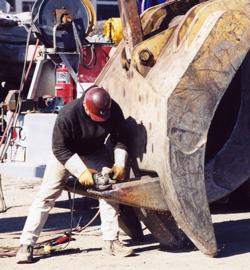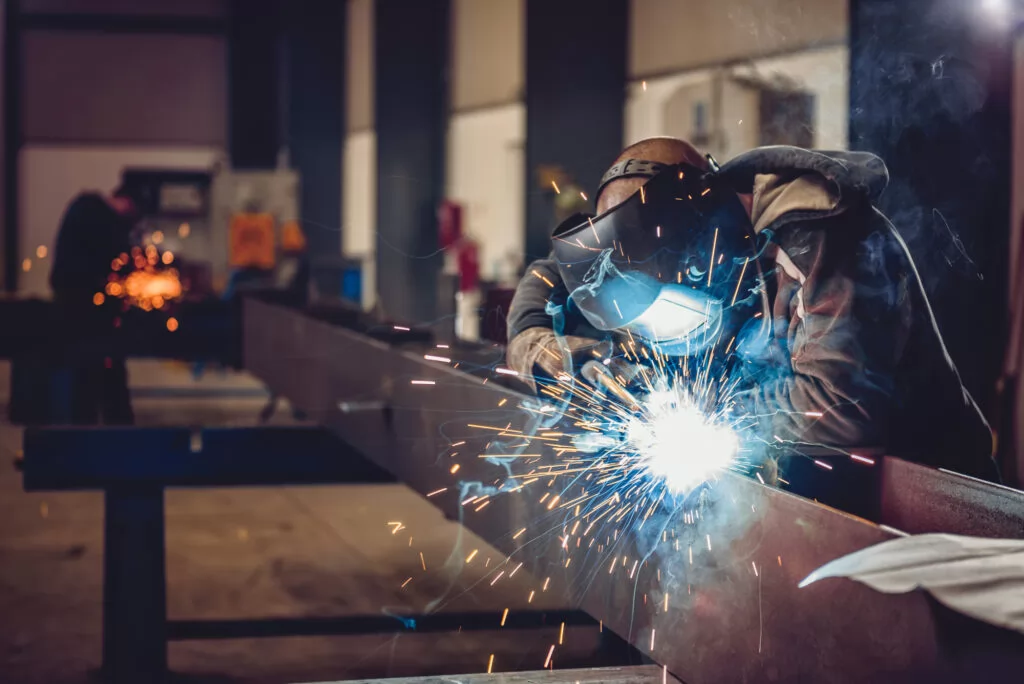Common Welding Repair Service Issues and Just How to Address Them Effectively
Welding repairs usually come across a variety of problems that can endanger the honesty of the end product. Usual issues include inadequate infiltration, porosity, and misalignment, amongst others. Each issue presents special challenges that need certain techniques for resolution. Comprehending these problems is necessary for welders intending to enhance their abilities and results. This discussion will certainly discover these usual welding fixing issues and efficient methods to resolve them.
Poor Infiltration
Insufficient penetration takes place when the weld steel falls short to fully fuse with the base material, causing weak joints and prospective architectural failures. This issue typically comes from not enough warmth input, wrong electrode angle, or improper welding rate. Welders may run into insufficient infiltration due to a mistake of the required criteria for a particular product density or type. Additionally, contamination on the base material's surface can prevent efficient bonding, aggravating the issue. To address insufficient infiltration, welders should ensure suitable settings on their tools and maintain a clean work surface area. Normal inspection of welds is advised to identify any kind of shortages early, enabling prompt adjustments and the avoidance of compromised structural honesty in bonded assemblies.
Porosity
Porosity is a typical flaw in welded joints that shows up as tiny gas bubbles trapped within the weld steel. This flaw can compromise the stability of the weld, resulting in decreased stamina and possible failure under stress and anxiety. Montana Mobile Welding and Repair Welding. Porosity commonly arises from contamination, wetness, or inappropriate welding techniques, which permit gases to leave into the molten weld pool. To deal with porosity, welders need to guarantee correct surface area prep work, maintain a tidy functioning setting, and make use of ideal welding parameters. Furthermore, choosing the best filler material and protecting gas can mitigate gas entrapment. Normal examination and screening of welds can aid determine porosity early, guaranteeing prompt corrective activities are taken, thereby protecting the quality and integrity of the welded structure
Imbalance
Misalignment in welding can occur from different elements, including improper setup and thermal growth. Recognizing the origin causes is crucial for efficient resolution. Several correction techniques are readily available to straighten elements and guarantee architectural honesty.
Reasons of Misalignment
Welding misalignment typically stems from a selection of underlying concerns that can endanger structural integrity. One key reason is improper fit-up of elements before welding, which can cause gaps and unequal surfaces. Variants in thermal development throughout the welding process can additionally result in distortion, specifically if the materials being joined have various coefficients of growth. Furthermore, inadequate fixturing and securing might stop working to hold elements securely in place, resulting in activity throughout welding. Poorly maintained devices, consisting of welding makers and devices, might present incongruities in the weld grain, more contributing to misalignment. Driver error, stemming from insufficient training or experience, can likewise play a considerable duty in producing misaligned welds.

Modification Techniques Available
Attending to imbalance efficiently calls for a combination of rehabilitative methods tailored to the particular problems at hand. One common method is using components or jigs to hold components in the right setting throughout welding, ensuring constant alignment. Furthermore, preheating the products can help in reducing distortion and enhance fit-up. For significant misalignment, mechanical adjustment methods, such as using hydraulic jacks or clamps, can be used to fix the placement before welding. Post-weld heat treatment may also be necessary to eliminate tensions caused by imbalance. Finally, careful inspection and change during the configuration phase can protect against misalignment issues from becoming significant troubles, promoting a smoother welding process and boosting overall architectural honesty.
Distortion
Distortion is an usual challenge in welding that can occur from various variables, consisting of unequal home heating and air conditioning. Recognizing the reasons of distortion is important for implementing effective prevention strategies. Resolving this concern not only improves structural honesty yet likewise enhances the general high quality of the weld.
Causes of Distortion
When subjected to the extreme warmth of welding, materials typically go through adjustments that can result in distortion. This phenomenon mostly emerges from thermal development and tightening throughout the welding procedure. As the weld area warms up, the material broadens; upon air conditioning, it gets, which can create internal stress and anxieties. On top of that, unequal home heating throughout a workpiece can exacerbate these stress and anxieties, resulting in bending or bending. The sort of material also plays a considerable function; steels with varying thermal conductivity and coefficients of expansion might respond differently, bring about uncertain distortions. In addition, bad joint design and poor fixturing can add to misalignment during welding, enhancing the probability of distortion. Understanding these causes is important for effective welding fixing and prevention techniques.
Avoidance Techniques
Reliable prevention techniques for distortion throughout welding concentrate on controlling warmth input and making certain proper joint layout. Preserving a consistent warm input aids to lessen thermal growth and tightening, which can result in distortion. Making use of methods such as preheating the workpiece can also decrease the temperature gradient, advertising uniform home heating. In addition, picking proper joint layouts, such as T-joints or lap joints, can boost security and decrease tension concentrations. Carrying out appropriate fixturing to safeguard the work surfaces in area even more help in keeping alignment throughout the welding procedure. Staggered welding series can distribute heat more uniformly, preventing localized distortion. By applying these methods, welders can considerably lower the possibility of distortion and enhance the overall high quality of their welds.
Breaking
Fracturing is a typical issue encountered in welding fixings, typically arising from various elements such as inappropriate cooling prices, product selection, or poor joint prep work. The incident of splits can greatly jeopardize the honesty of the weld, bring about potential failures throughout operation. To resolve this issue, welders have to initially analyze the source, ensuring that materials work and suitably chosen for the certain application. Furthermore, regulating the cooling price during the welding procedure is crucial; rapid air conditioning can generate stress and anxiety and bring about cracking. Appropriate joint style and prep work also add to reducing the risk. Executing these methods can improve weld high quality and durability, ultimately decreasing the chance of cracking in finished weldments.

Insufficient Fusion
A substantial issue in welding repair work is incomplete blend, which happens when the weld steel does not effectively bond with the base material or previous weld passes - Belgrade Welding. This problem can lead to weak points in the joint, potentially endangering the integrity of the bonded structure. Factors adding to incomplete combination include insufficient warmth input, incorrect welding technique, and contamination of the surfaces being joined. To address this problem properly, welders need to ensure proper pre-weld cleansing and surface area prep work, in addition to adjust their welding specifications to achieve appropriate infiltration and combination. visit the site Routine inspection during the welding process can additionally assist identify incomplete fusion early, enabling prompt rehabilitative procedures to enhance the total high quality of the weld
Overheating
While welding repairs can improve structural integrity, overheating offers a significant difficulty that can lead to product destruction. Excessive heat during welding can modify the mechanical buildings of metals, leading to decreased stamina, enhanced brittleness, and bending. This phenomenon is especially important in high-stress applications where architectural integrity is critical. Identifying overheating can include visual assessments for discoloration or distortion, in addition to keeping track of temperature during the welding process. To reduce the dangers connected with overheating, welders should utilize suitable methods, such as managing heat input, adjusting traveling rate, and making use of ideal filler products. Additionally, implementing pre- and go now post-weld warm therapies can assist bring back product residential or commercial properties and improve the general top quality of the fixing, ensuring long-term efficiency and safety and security.
Often Asked Concerns
What Are the Typical Signs of a Welding Flaw?

Exactly How Can I Examine My Welds for High quality?
To check welds for high quality, one can utilize visual inspections, ultrasonic screening, and radiographic approaches. Each strategy ensures architectural stability, recognizes issues, and verifies adherence to defined standards, eventually improving the dependability of the bonded joints.
What Safety and security Preventative Measures Should I Take While Welding?
When welding, one should focus on safety and security by wearing appropriate individual safety devices, making certain correct air flow, safeguarding combustible materials away, keeping a tidy office, and recognizing surroundings to stop accidents and injuries.
Can I Repair a Weld Without Redoing the Entire Joint?
Fixing a weld without remodeling the whole joint is feasible, relying on the damage (Belgrade). Techniques such as grinding, adding filler product, or utilizing a welding process can successfully address certain flaws while protecting the bordering structure
What Tools Are Essential for Efficient Welding Repair Works?
Crucial tools for efficient welding repairs include a welding machine, cable brush, mill, safety gear, clamps, and filler materials. Each tool plays an essential role in ensuring high quality and safety during the repair service process. Porosity commonly develops from contamination, moisture, or incorrect welding strategies, which allow gases to More Help get away into the liquified weld pool. Poorly kept tools, consisting of welding devices and devices, may introduce incongruities in the weld bead, additional contributing to misalignment. When subjected to the intense warm of welding, materials usually go through adjustments that can lead to distortion. Breaking is a typical concern experienced in welding repairs, typically resulting from numerous elements such as improper air conditioning prices, material selection, or insufficient joint preparation. A considerable problem in welding repair services is incomplete fusion, which occurs when the weld metal does not properly bond with the base product or previous weld passes.